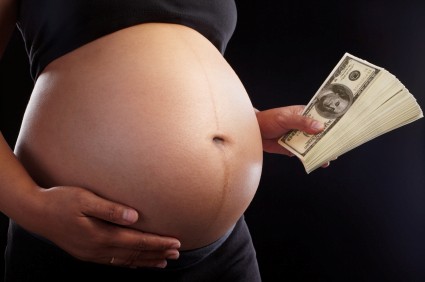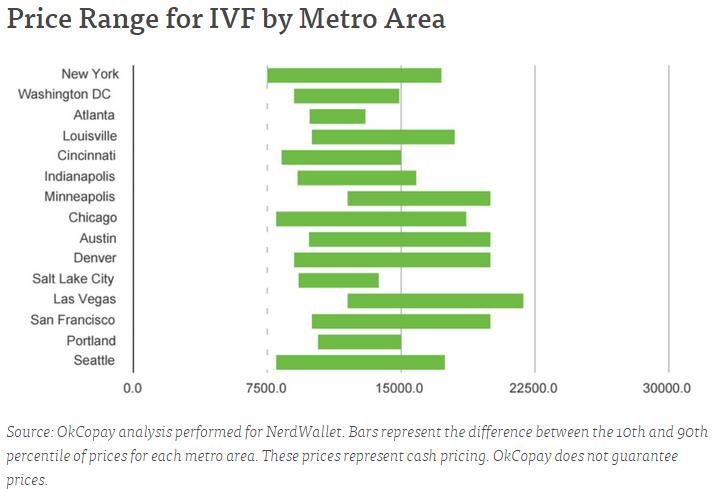In vitro fertilization is a medical process in which sperm and eggs are placed in a laboratory dish for fertilization. With IVF, women have an option of either using their own eggs and sperm or using donor sperm and eggs. And it is common to have many questions about fertility treatments including IVF. Some questions the success of the treatment while others care a lot about the in vitro fertilization cost.

How Much Does In Vitro Fertilization Cost?
According to the American Society of Reproductive Medicine, the IVF cycle costs $12,400 on average in the US. But it ranges between $10,000 and $15,000 depending on the state, required medication, and number of IVF cycles required.
The cost also varies depending on your insurance cover of such procedures. Do not assume that your insurance cover will take care of all the cost of IVF. Some insurance companies do not cover such medical procedures and hence it is important to ask about your benefits beforehand.
A survey was conducted to investigate the amount of money that couples spent to cater for IVF treatment for 18 months. The out-of-pocket expenses investigated included monitoring cost, medication and IVF treatment cost. The study results indicated that couples spent an average amount of $19,234 for IVF and $6,955 for an extra IVF cycle.
Additional Cost
Assisted reproductive procedures increase the cost of IVF.
- ICSI treatment is a reproductive treatment in which one sperm is injected into one egg. This procedure increases the cost by $1,000-1,500.
- Genetic testing of embryos or PGD costs between 1,800 dollars and 7,500 dollars but the average cost is 3,000 dollars.
- Embryo freezing and storage costs 200-600 dollars annually while using an egg from a donor increases the cost by $13,000- 17,000 in every IVF cycle.
- Some couples opt for surrogacy, which is the most expensive IVF option. Surrogacy costs include agency costs, payments received by the surrogate, legal fees and IVF costs. The total costs ranges between 50,000 dollars and 100,000 dollars.
- The least expensive donor option is embryo donation. The cost of embryo donation is lower than the cost of one IVF cycle. The whole process of embryo donation costs $5,000 to $7,000. This amount does not include the cost of choosing sperm and egg donors. In addition, it does not include the cost of creating an embryo that suits your cycles. These processes are very expensive and increase in vitro fertilization cost significantly. Using an embryo that is already created is cheaper.
The images below show the variations in costs of IVF in selected metro areas in the US. The first images display the average cost while the second shows price ranges.


(Image source: www.nerdwallet.com)
Is There A Way That You Can Reduce the Cost?
Unfortunately, there are limited ways of reducing in vitro fertilization cost and making IVF affordable and more accessible to couples, because the detailed treatment uses state-of-the-art technlogy. The process requires specialised patient care to be successful. One way of reducing cost of IVF is carrying out preliminary tests at the office of an obstretrician. This reduces the initial costs of the treament. However, ultrasounds and all laboratory procedures must be conducted at the fertility clinic. This will ensure that pateint follows the IMF timeline, which determines the success of the procedure. Couples must be aware of laboratory costs and other indirect costs that make fertiltiy treatments expensive. Many states do not have laws that mandate insurance companies to cover fertility treatments. In such states, couples must meet the high costs out-of-pocket.
Note
Couples can save costs by freezing unused embryos. You can request your fertility clinic to freeze left over embryos and use them in your second or third IMF cycles. You can also donate the unused embryos to an infertile couple or ask the fertilify clinic to destroy them. A couple must agree on this decision before starting the IMF treatment.
What's the Success Rate for IVF?
Given the in vitro fertilization cost, infertile couples are always curious to find out the success rate of the procedure. The success of IVF depends on various factors including age, causes of infertility, donor or own eggs, pregnancy history, and frozen versus fresh embryos.
1. Age
The success rate of women aged 34 and below is 30-40% when using their own eggs. The rate reduces gradually from the age of 35. The age of the egg supply has a significant effect on the success of AT procedures in terms of pregnancy and healthy babies.
|
Age |
Success Rate |
|
Yunger than 35 |
41 percent |
|
35 to 37 |
31 percent |
|
38 to 40 |
22 percent |
|
41 to 42 |
12 percent |
2. Infertility Causes
Some complications with male and female reproductive systems can lead to infertility. These include complications in ovulation, sperm and fallopian tubes. Women who have given birth before have higher chances of pregnancy through IVF. However, this advantage reduces in their early 30s and in their 40s.
3. Own Eggs vs. Donor Eggs
Women can increase their chances of conception by using either donor or their eggs depending on their age. For instances, women above 40 years of age have higher chances of pregnancy and healthy babies using donor eggs. The chances of a live birth for a woman using her own eggs are 40% at late 20s, 30% at age 38 and 10% at age 43. The rates remain the same for donor eggs.
4. Frozen Embryos vs. Fresh Embryos
The average rate for women between age 20-40 is 55% when using fresh embryos. The chances of giving birth to a healthy baby are higher when using fresh donor embryo than when using frozen donor embryos.
The thing is, frozen embryos help women to reduce the in vitro fertilisation cost. In addtion, using frozen embryos is less intrusive because egg retrieval and superovulation procedures are not required. However, it is advisable to use freshly-fertilised embryos to increase the chances of a live birth.
What About Risks?
Besides in vitro fertilisation cost, the possible risks that may occur should not be ignored. The major risks of IVF are multiple pregnancy and ovarian hyperstimulation syndrome.
- Multiple pregrancy may result if many embryos are transferred into the uterus. This is a high risk for the fetus and mother.
- Ovarian hyperstimulation syndrome results from hormone treatments used in supervoluation. The risk of this syndrome can be reduced by monitoring hormone levels and ovaries during the treatment.
- Birth defects is another possible risk of IVF. Your fertility doctor should advise you about such risks.
